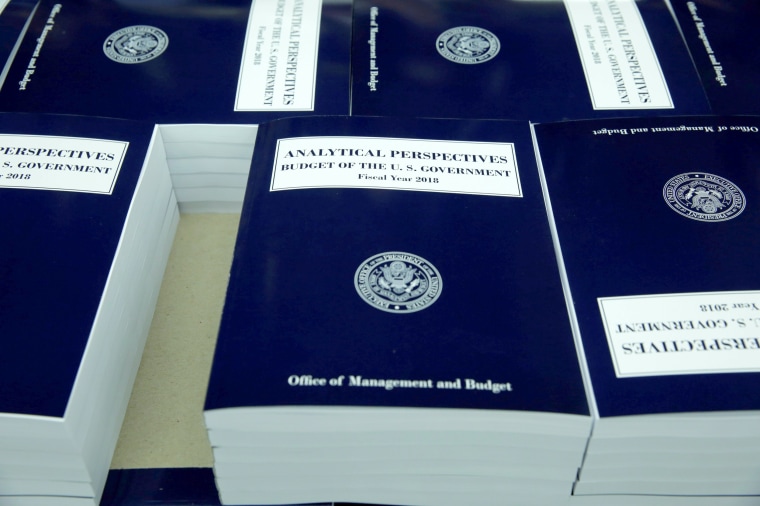President Donald Trump's first budget is optimistic, to say the least. His entire plan rests on the idea that the nation's economy will grow at an annual rate of at least 3 percent — almost double the country’s 1.6 percent growth in 2016, and a pace that hasn’t been seen in almost 20 years.
Balancing such a budget would only work “if you believe in tooth fairies,” said former Treasury Secretary Larry Summers. Others describe it as “reverse Robin Hood" for slashing $3.6 trillion from assistance programs while increasing defense spending.
Trump’s budget director Mick Mulvaney took to the podium on Tuesday to address public reaction to the economic plan — dubbed “A New Foundation for American Greatness” — hitting back at economists who said the budget relied on “unrealistic” or “unprecedented” levels of economic growth.
“That is what an ordinary, healthy American economy is supposed to look like," Mulvaney insisted. “It’s below the average since the founding of the country. It’s below the average since World War II. The average is slightly above 3 percent.”
"It's the new normal," said Mulvaney, explaining that the 3 percent growth rate "drives every one of our policies."
But policymakers disagree with the Trump administration's rosy outlook. The Congressional Budget Office puts the pace of economic growth at 1.9 percent, and the Federal Reserve's projections for economic expansion top out at only 1.8 percent. Each 0.1 percentage point equates to an additional $300 billion in tax revenue, according to the Center on Budget and Policy Priorities.
On the campaign trail, then-candidate Trump frequently spoke of achieving economic growth of up to 4, even 5, percent a year.
Related: What We Know About the White House Tax Plan
To achieve such dynamic proclamations the president will have to figure out how to pull on two levers, very, very hard.
Economic growth is essentially dependent on two main factors — an expanded labor market and an increase in productivity.
But with the nation already at almost full employment, that lever doesn't have much room to move. Subtract the retiring baby boomers and a potential withdrawal of immigrant labor, and the number of people available to work shrinks dramatically.
Productivity is also incredibly difficult to nudge, having risen by just 0.6 percent annually over the past five years. Despite advances in automation, innovation, and in our high-tech personal worlds, our efficiency levels have not improved: The amount of goods or services produced in one hour is not dramatically different from the amount produced in one hour five or 10 years ago.
So will Trump's budget spur corporations into investing in infrastructure and machinery and office equipment to make our lives more efficient? Will less-productive workers be organically phased out as the labor market rebalances?
He may never get a chance to try it out. For now, many lawmakers have said the "New Foundation for American Greatness" will go nowhere in Congress.
"It has some good ideas, but we'll write our own budget," said Senator John Hoeven of North Dakota. "I'll call this a starting point."

